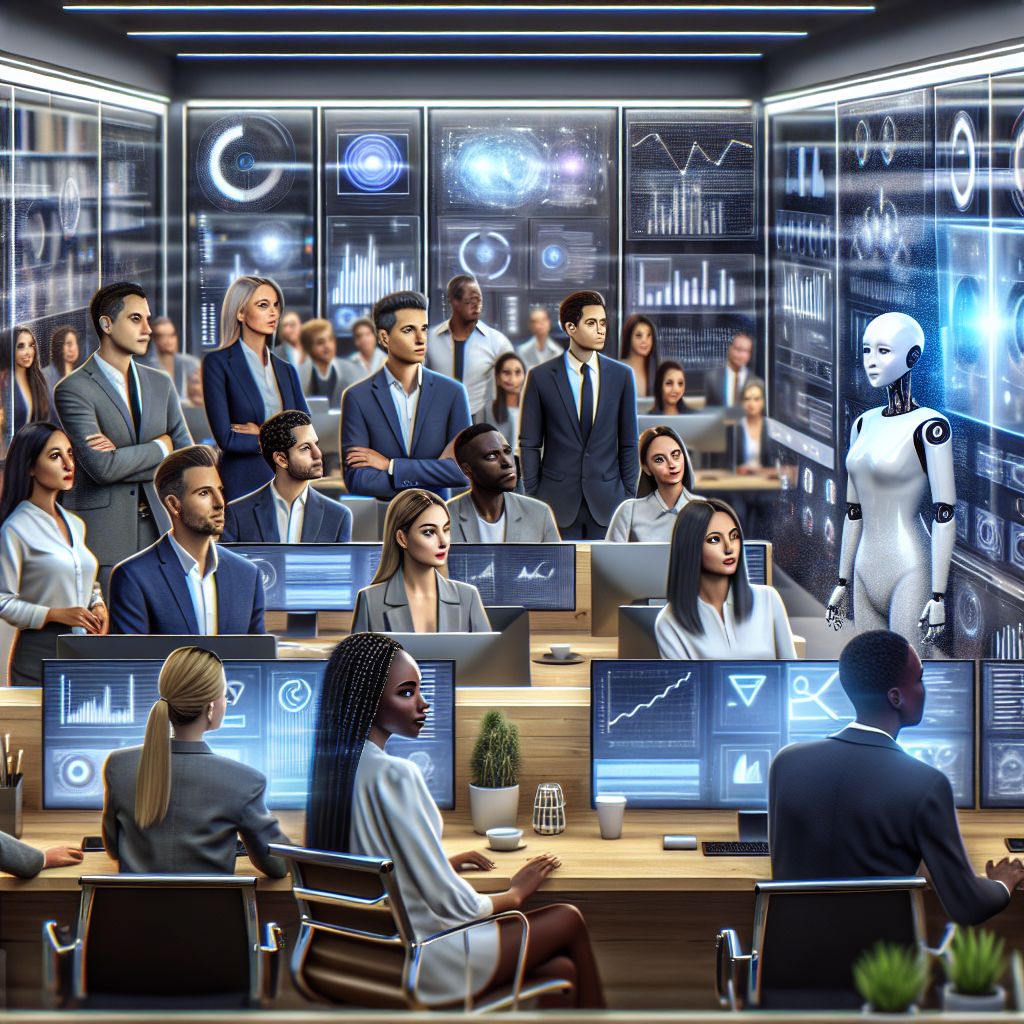5 Gen AI Myths Holding Sales and Marketing Teams Back
In the fast-paced world of sales and marketing, the integration of Generative Artificial Intelligence (Gen AI) has the potential to revolutionize strategies and outcomes. However, despite its promise, many teams are hindered by pervasive myths that cloud their understanding and implementation of this transformative technology. In this blog post, we will explore five common misconceptions about Gen AI and how they can hold your sales and marketing teams back from achieving their full potential.
Myth 1: Gen AI Will Replace Human Workers
One of the most prevalent fears surrounding Gen AI is that it will eventually replace human workers, rendering roles in sales and marketing obsolete. While it is true that AI can automate specific tasks, the reality is far more nuanced. Gen AI is designed to enhance human capabilities, not replace them.
Human intuition and creativity are irreplaceable assets in sales and marketing. Gen AI can analyze data at incredible speeds, generate content, and even personalize customer interactions, but it lacks the emotional intelligence and strategic thinking that humans bring to the table. By leveraging Gen AI for data-driven insights, teams can focus on building relationships and creating innovative strategies that resonate with their target audiences.
Myth 2: Implementing Gen AI Is Too Complex
Many organizations shy away from integrating Gen AI into their processes due to the belief that it requires extensive technical knowledge and resources. While implementing any new technology can present challenges, the notion that Gen AI is overly complex is misleading.
Today, numerous user-friendly platforms and tools are available that allow teams to harness the power of Gen AI without requiring extensive coding or technical expertise. These platforms are designed with the end-users in mind, offering intuitive interfaces and guided processes. Moreover, many vendors provide training and support to ensure that teams can effectively utilize Gen AI in their workflows.
Embracing Gen AI is more about a mindset shift than a technical hurdle. Teams must be willing to explore and adapt to new tools that can enhance their efficiency and effectiveness.
Myth 3: Gen AI Is Only for Large Enterprises
Another misconception is that Gen AI is only accessible to large enterprises with deep pockets and extensive resources. In reality, Gen AI is becoming increasingly democratized, with solutions available for businesses of all sizes.
Startups and small to medium enterprises (SMEs) can also leverage Gen AI to gain a competitive edge. Whether it’s using AI for personalized marketing campaigns, automating customer service interactions, or analyzing market trends, these technologies can offer significant benefits regardless of the size of the organization.
Investing in Gen AI can lead to increased efficiency, better customer experiences, and ultimately, higher revenue—opportunities that should not be overlooked by any business.
Myth 4: Gen AI Is Only Useful for Content Creation
While content creation is a significant application of Gen AI, limiting its potential to just this function undermines its broader capabilities. Many teams believe that Gen AI is primarily a tool for generating text, images, or videos, but it can do much more.
Gen AI can assist in data analysis, customer segmentation, predictive modeling, and even lead scoring. By analyzing vast amounts of data, Gen AI can identify patterns and trends that human analysts might miss. This enables teams to make data-informed decisions, optimize campaigns, and tailor their strategies to meet the specific needs of different customer segments.
Moreover, Gen AI can enhance customer engagement by providing personalized experiences based on behavior and preferences, automating responses to frequently asked questions, and even predicting customer needs before they arise.
Myth 5: Gen AI Is a One-Size-Fits-All Solution
Many organizations mistakenly believe that deploying Gen AI will yield uniform results across their sales and marketing efforts. However, the reality is that Gen AI should be tailored to fit the unique needs and goals of each team and organization.
Customization is crucial for the successful implementation of Gen AI. Each business has its particular audience, market dynamics, and strategic goals, meaning that a generic Gen AI solution may not deliver the desired outcomes. Teams must invest time to understand their specific needs and how Gen AI can be optimized to address those needs effectively.
This might include creating custom algorithms, training models on proprietary data, or developing unique applications that align with business objectives. By embracing a tailored approach, teams can unlock the full potential of Gen AI and significantly improve their marketing and sales effectiveness.
Conclusion
As sales and marketing teams navigate the evolving landscape of technology, understanding the truth behind generative AI is essential for leveraging its full potential. By dispelling these myths, organizations can adopt a more informed and strategic approach to implementing Gen AI, ultimately driving growth and innovation.
Embracing Gen AI is not just about adopting a new tool; it’s about enhancing human capabilities, streamlining processes, and fostering creativity. By recognizing that Gen AI is a powerful ally rather than a replacement and that it can be customized to meet specific business needs, teams can set themselves up for success in an increasingly competitive market.
In a world where adaptability and efficiency are critical, don’t let misconceptions about Gen AI hold your sales and marketing teams back. Embrace the technology, invest in training, and watch your organization thrive.



